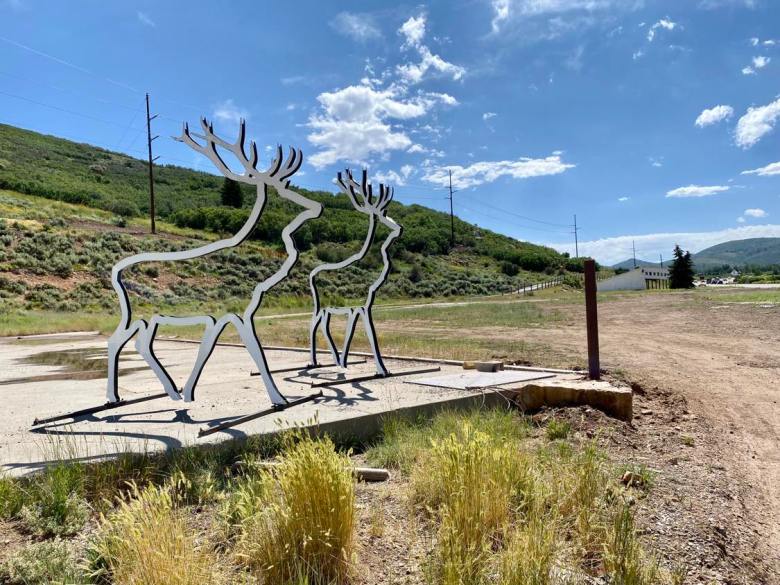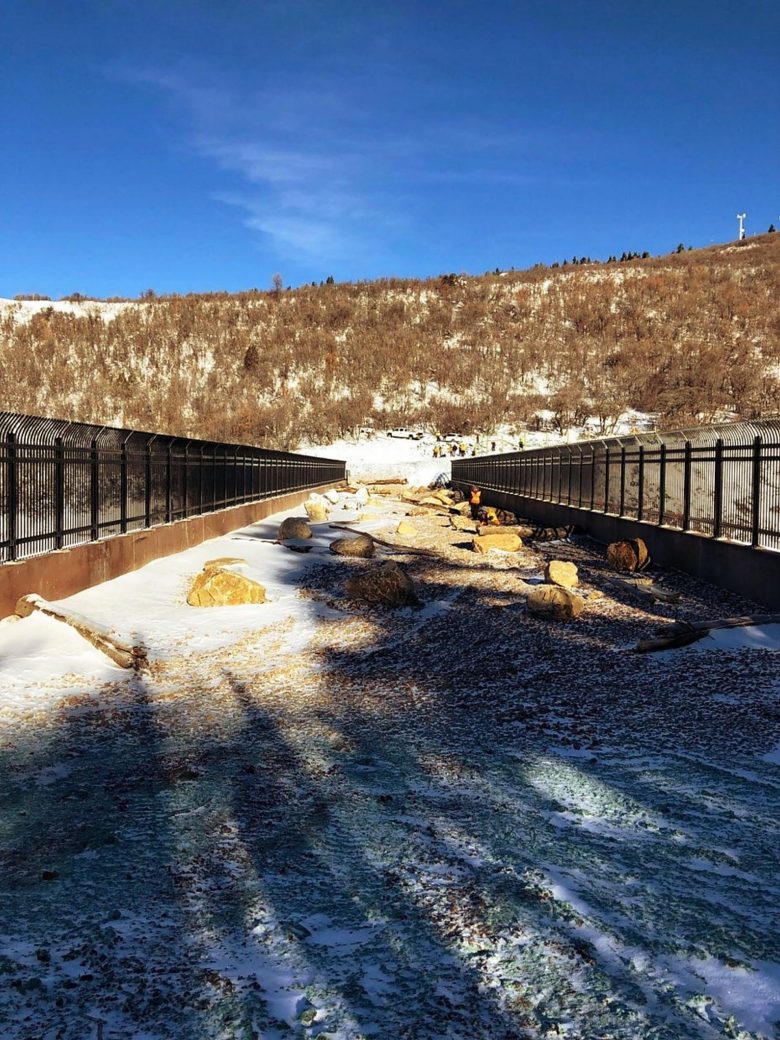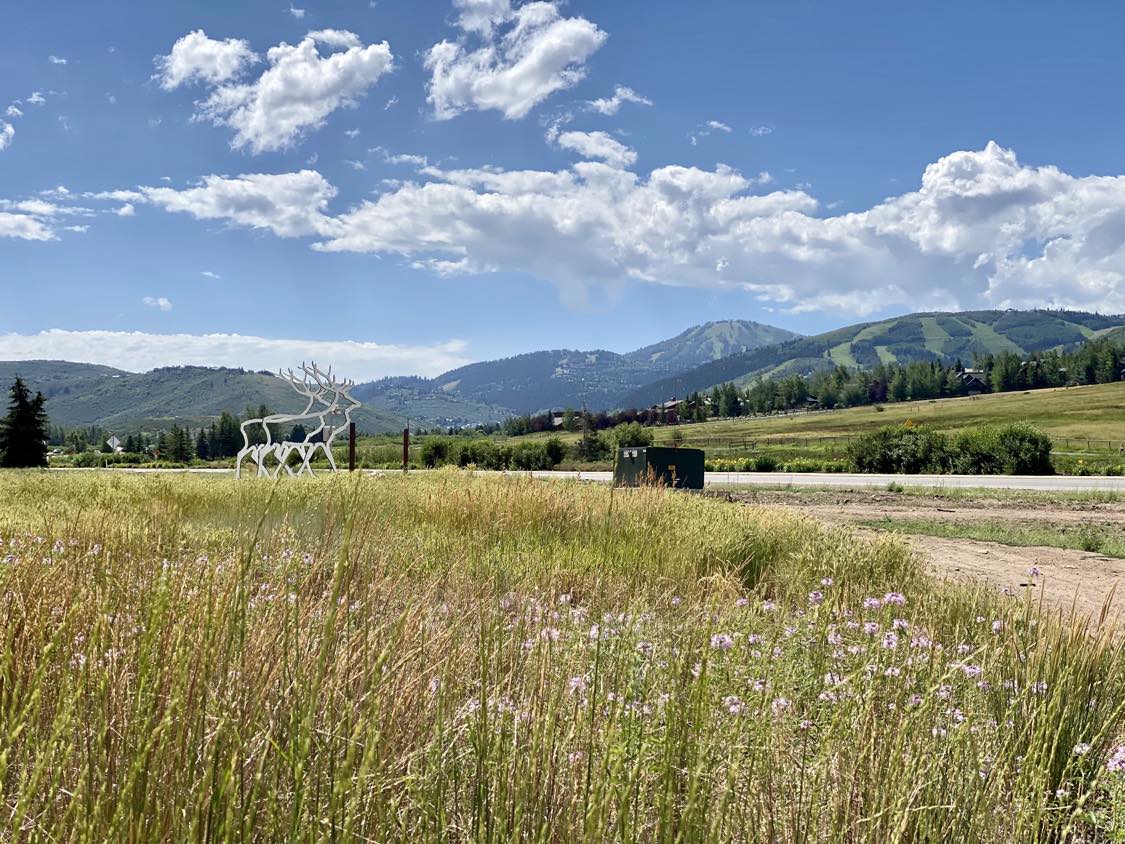
There’s a symphony of bird songs and rustling leaves that plays out through the hillside of Thaynes Canyon. But the sweet sound is almost drowned out by the monotonous sound of traffic droning up and down the street.
The source of the noise comes from the picturesque entryway into Park City, and the roadway is just a few hundred yards away from a neighborhood where deer, elk and moose can be a regular sight; though homeowners say the likelihood has decreased in recent years. Where many people see beautiful, open-space views, wildlife advocates have a much grimmer picture of the 6-mile stretch they say is a hotspot for collisions.
The drive from Kimball Junction to Kearns Boulevard is the fifth-highest location in the state for large wildlife fatalities, according to a 2019 report by Dr. Patricia Cramer, which the wildlife researcher prepared for the Utah Department of Transportation. An analysis found there were around three crashes per mile each year, or around 18 annually.
And the mile in front of McPolin Farm is the deadliest stretch of road within that span. Vehicle collisions with big-game species on S.R. 224 cost drivers an average of $125,308 per year, a BIO-WEST study from the following year found.
“The frequency of wildlife-vehicle collisions (WVC) within this corridor is a source of economic, safety, and natural resource concern,” the study said.
To help raise awareness about the issue, the nonprofit organization Save People Save Wildlife commissioned several silhouettes of beloved animals using community donated funds to be placed in various spots in the corridor including at Swaner Preserve & EcoCenter and near Cutter Lane.
The final sculptures, modeled after elk, were erected at the McLeod Creek Trailhead. Hours after they went up, a young buck was killed. Its decayed carcass still served as a reminder of the potentially deadly consequences a week later.
“Our work is dedicated to not just protecting animals from conflicts with automobiles,” said Bill Ciraco, who joined the nonprofit’s board of trustees in April. He noted there’s an average of 30,000 road trips along S.R. 224 with little protection for migratory wildlife in the area. “We are especially concerned that one day there will be a similar outcome for a driver who swerves into oncoming traffic to avoid an animal.”
Save People Save Wildlife also partnered with UDOT to lower the speed limit in the corridor to 45 mph and placed signage alerting drivers to wildlife crossings. Yet Erin Ferguson, the president of the nonprofit, said further mitigation is needed to help protect people — and animals.
The options could range from additional fencing to a wildlife overpass. However, Ferguson and Ciraco indicated there’s been a stalemate in pursuing resources to make it happen.
Gov. Spencer Cox signed $20 million in the state’s budget to create wildlife crossing infrastructure, which includes the possibility to leverage funding through matching dollars provided by the U.S. Department of Transportation. Nonprofits can’t apply for the funding, which means Save People Save Wildlife must partner with an entity such as UDOT and High Valley Transit or the County Courthouse and City Hall.
Ferguson and Ciraco said they feel officials, who have concerns about the cost, preserving the viewshed or other community issues, haven’t been competitive enough. UDOT may also seek a study to determine how the lowered speed limit and signage have affected the number of collisions on S.R. 224 before committing to another wildlife-related project there.
Those who drive the route every day could probably guess the results. And if officials wait another year for the results, Ferguson said, they miss another grant cycle.
With major infrastructure work already planned in the corridor for the bus rapid transit project, which will create a dedicated public transportation lane in each direction, as well as interchange improvements at I-80, Save People Save Wildlife has advocated for the inclusion of mitigation measures in each project.

Studies referenced by Save People Save Wildlife are clear: an overpass with fencing for wildlife connectivity is the most effective way for animals to move safely as collisions are reduced by 90%.
The nonprofit said it can be a beautiful, natural-looking feature when done well. Possible locations include connecting the White Pine Canyon area with Meadows Drive or an area of open space between S.R. 224 and Swaner. It could take two years to complete once the process starts.
The wildlife overpass on Interstate 80 at Parleys Summit is the largest crossing in the state. The $5 million project was completed in December of 2018. Utah created the first wildlife overpass in the United States in 1975 on Interstate 15 near Beaver and the state has gone on to build more than 60 others.
But Save People Save Wildlife isn’t taking an “all or nothing” position.
The nonprofit would settle for smaller measures such as fencing, cattle guards and other forms of crossings until the support for larger projects such as an underpass or overpass builds. It has raised more than $200,000 for mitigation measures since its formation.
Ciraco emphasized many Parkites love the environment, which should extend to wildlife. The opportunity to witness animals such as moose, elk and deer adds to the mountain-town feeling that makes the Park City area unique.
“Science shows these conflicts can be reduced, and that’s not only good for us but for the wildlife,” Ciraco said. “Let’s acknowledge the impact that we have on the land and do something to mitigate it.”

